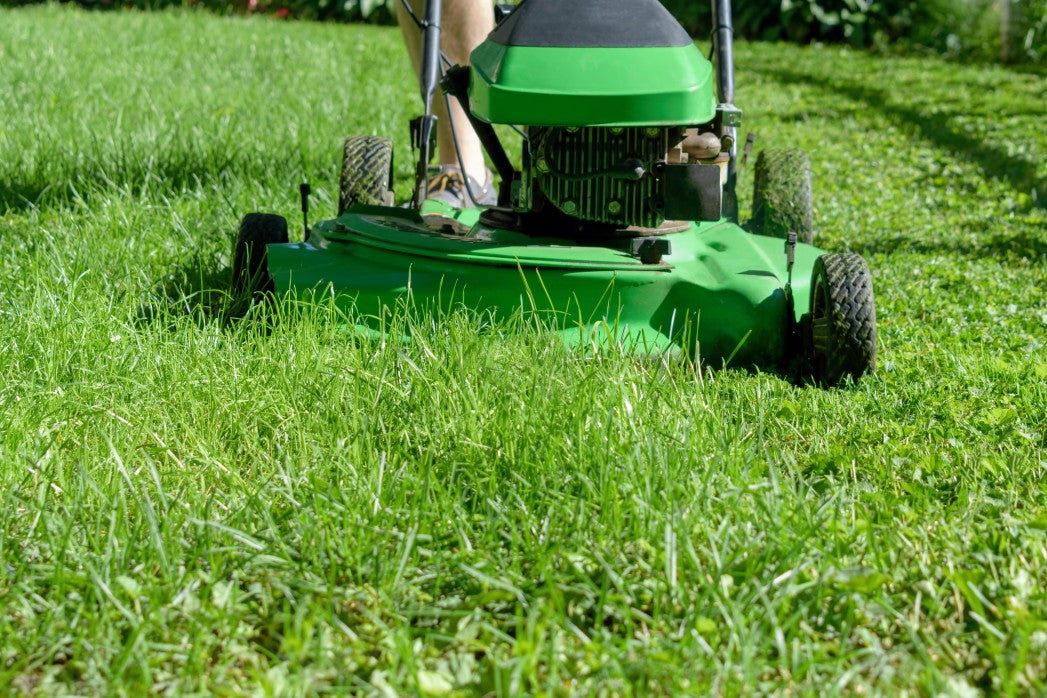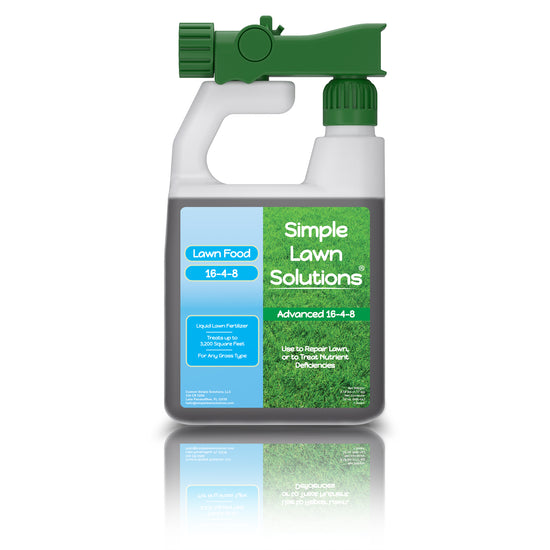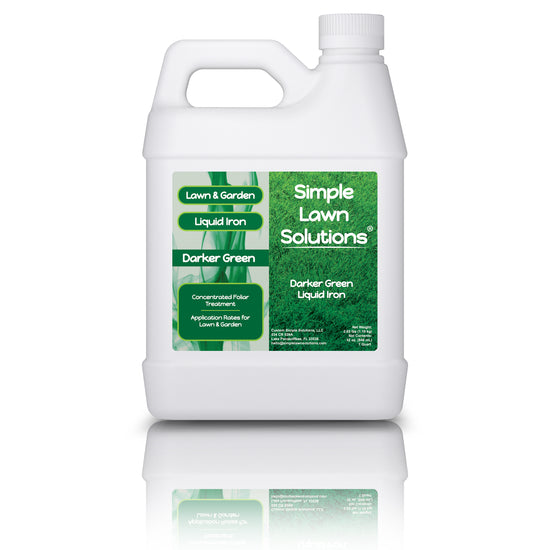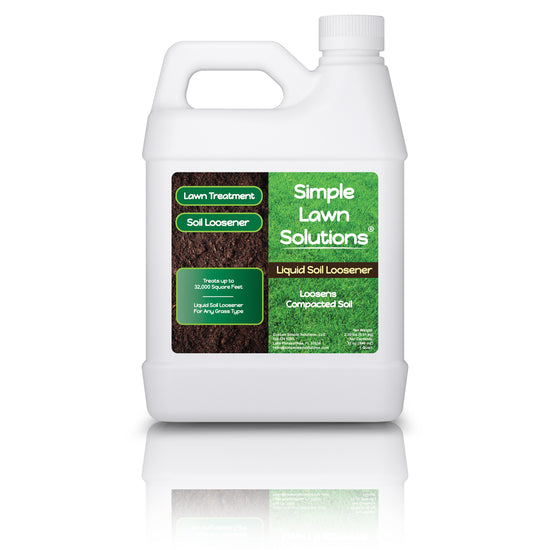Most new homeowners believe that all grass can be treated and cared for the same way. Those homeowners often spend years of trial and error developing their grass care routine, when all they had to do was identify their type of grass first! We’ll help you discover different types of grass, how to identify your grass type, and help you build a liquid lawn care routine.
The Dangers of Fertilizing Before Identifying
If you are thinking about skipping the identification step in your grass care, then it’s time to face the risk you are putting on your lawn. Assuming you have a certain grass type dictates your fertilizing schedule. If you fertilize during the wrong time of the year or choose the wrong fertilizer formula for your grass type, you could see the following results:
- Burned grass
- Insect infestation
- Bald patches
- Fungus growth
- Yellow and brown patches
- Poor or stunted growth
- Thinning grass blades
With a major grass care mistake like applying the wrong fertilizer or fertilizing at the wrong time, you will spend much more time and money to reverse the damage! It’s better you take the time to learn what grass type you have when to fertilize, and the best fertilizer options for your lawn.

Know Your Region, Know Your Grass Type
Knowing what region you live in is the first step in identifying the grass type on your lawn. The northern part of the United States is home to cool-season grass. The southern part of the United States is where warm-season grass loves to grow. If you live somewhere in-between, you are in the transition zone, where both warm- and cool-season grasses can survive. Before we dive into the complex Transition Zone, let’s first discuss the main options: cool-season grass and warm-season grass.
Cool-Season Grass
If you live in the northern half of the United States, then you most likely have cool-season grass. The best way to know for sure is by paying attention to how your grass acts during different months. Does your grass survive winters pretty well, but brown up or enter dormancy during drought in the summer heat? If it does, you have cool-season grass! This grass type is called cool-season because they thrive in the cool seasons, such as fall and spring. Cool-season grass types include:
- Fine fescues
- Kentucky bluegrass
- Perennial ryegrass
- Traditional tall fescue
- Turf-type tall fescue
We’ll break down how to identify which grass type you have, and tips for ultimate grass care!
Fine Fescue
Do you have fine-textured grass? Is your lawn mostly in the shade? Does your lawn look a little patchy, with noticeable clumps of plants? You probably have fine fescue grass on your lawn. Fine fescue is a great low-maintenance grass that does well in the shade. Due to its bunch-type growth habit, which means it doesn't really spread from rhizomes or stolons, fine fescue does not do well with a lot of foot traffic, so make sure you have a walkway or stepping stones to avoid extra damage and soil compaction.
Kentucky Bluegrass
The leaf tips of Kentucky bluegrass can be described as “boat-shaped.” Kentucky bluegrass holds up well to traffic and is a great choice for cool-season yards with lots of activity. Although Kentucky bluegrass does best during the spring and fall, it prospers when it’s in direct sunlight, so it won't do well in heavily shaded areas. It is often dark green, but can almost look dark greenish-blue. Kentucky bluegrass grows assertively, so be aware of any thatch buildup. Grab a rake and carefully break down thatch, and remember to collect any grass clippings after mowing.
Perennial Ryegrass
Perennial ryegrass is a good choice to fill in a lawn quickly, however it does not stand up to traffic very well for the same reason as the fine fescues. Perennial ryegrass has great insect and disease resistance. It can make a nice-looking, low-maintenance lawn that doesn't get trampled on consistently. It is not as cold tolerant as bluegrass and the fine fescues, so keep that in mind in the far north.
Turf-Type Tall Fescue
Turf-type tall fescue has it all: can withstand heat, survive through droughts, and thrive in the shade. Its only weak point is its lack of cold tolerance. Newer varieties have been bred with finer textures, but this is not a great barefoot grass due to its coarse texture. If your lawn has lasted through heat, drought, and grows in the shade, you probably have turf-type tall fescue.
Cool-Season Grass Fertilizer
The general schedule for cool-season grass is to fertilize once in the spring once growth has resumed, twice in the fall, once in September, and again sometime in mid to late October. All of our fertilizers work for any grass type, but a personalized grass care routine can cultivate great results! For general use, we recommend 15-0-15 fertilizer. However, different types of cool-season grass require different care. Here is our suggestion for each grass type:
- Fine fescue – requires the least amount of nitrogen during the growing season of all the cool-season grasses, so try 6-0-0
- Kentucky bluegrass – this grass type needs 16-4-8 Liquid Lawn Food most of the time, but apply a high nitrogen dose once a year, like our 28-0-0 formula.
- Perennial ryegrass – reach for our 3-18-18 Lawn Food formula, which will help roots and plant hardiness.
- Turf-type tall fescue – We recommend our 15-0-15 liquid lawn formula for enhanced green and plant hardiness.
Warm-Season Grass
Southern residents, never fear! We have a plan to help you identify your warm-season grass type and create a fertilizer plan for you. If you live in the Sun Belt, you probably have warm-season grass. This grass type tends to be dormant in the winter, which can last months on end, as warm-season grass believes winter is any temperature under 80 degrees! If your lawn has warm-season grass, then it thrives in the hot springtime and summer of the south. Warm-season grass types include:
- Bermudagrass
- Zoysiagrass
- St. Augustinegrass
- Centipedegrass
- Bahiagrass
We’ll take a closer look at each one to help you identify your lawn and provide it with the grass care routine it needs to thrive!
Bermudagrass
Bermudagrass is a medium-textured, light to lime green grass, great for use on southern lawns. It grows quickly but does not tolerate shade very well. If you have a lot of thin spots in shady areas but can't seem to keep up with the mowing in sunny areas, you most likely have bermudagrass. Bermudagrass is well adapted to many conditions and handles traffic well. Watch out during the winters because it does not appreciate the cold.
Zoysiagrass
Does your lawn retain its green color deeper into the winter than other lawns in your neighborhood? You may have a zoysiagrass lawn. Zoysiagrass stays green for a longer period than other warm-season grass, often into the late fall. It’s also the first to turn green. Zoysiagrass is a light or medium green color and very dense, which means you will need your rake out often for regular thatch maintenance! It is a slow grower and can handle some traffic, but is slow to recover if it's been beaten down. Fine-textured zoysia matrellas make very attractive lawns that can do well in shady spots where bermuda won't grow.
St. Augustinegrass
If you live in the deep south and have a very coarse-textured lawn with wide blades, you most likely have St. Augustinegrass. St. Augustinegrass does great in shady areas but it absolutely will not tolerate extreme cold. Watch out for chinch bugs, brown patch and St. Augustine Decline virus, however, because these can be a major nuisance to St. Augustine.
Centipedegrass
Does your lawn seem like it never needs to be mowed and looks pretty good with minimal inputs? You may have a centipedegrass lawn. This grass is for people that don't want to put a bunch of time and effort into their lawn care but want a grass that will look halfway decent anyway. Centipedegrass requires very little attention and may even look better if you just leave it alone. It needs a bit more water than some of the other warm-season grasses and is less cold tolerant as well.
Bahiagrass
Does your warm-season lawn look sparse and unattractive but does pretty well when left alone and in the shade too? You may have bahiagrass. Bahia has pretty good shade tolerance for warm-season grass but does require some more water than other warm-season grasses as well. This is also another great low-input grass that doesn't require much to keep it from dying.
Warm-Season Grass Fertilizer
Warm-season grass should be fertilized 3-4 times a year, surrounding the dormant winter season. The first time to fertilize is in early spring once the grass has greened back up and has begun growing again, in late spring, then again in early summer, and finally in late summer. For bermudagrass and zoysiagrass we recommend 15-0-15, 16-4-8 Liquid Lawn Food, or 28-0-0; for St. Augustine, centipede, and bahia, try lower nitrogen sources like 6-0-0 and 3-18-18 Lawn Food

The Transition Zone
Your area of the U.S. might have both cool-season and warm-season grass. This area is called the transition zone, which cuts through the middle of the country and has a mixed range of grass types. If you live in the transition zone, you could have completely different grass than your neighbors! Since the transition zone has the widest range of grass types, many homeowners misidentify their grass, which can lead to a lot of frustration when it comes to their grass care routine. The states in the transition zone include:
- Virginia
- North Carolina
- South Carolina
- Kentucky
- Tennessee
- Northern Georgia
- Northern Mississippi
- Oklahoma
- Kansas
- Missouri
- Arkansas
- West Virginia
- Southern Pennsylvania
If you live in one of these states and are not seeing the right results in your lawn, then keep in mind that you might have cool-season OR warm-season grass.
Identifying Your Grass Type in the Transition Zone
Pay attention to your lawn, as it might have one of the grasses we have identified above based on characteristics like color, density, growth speed, blade shape, and more. If you’re still not confident, here are the most common grass types in the Transition Zone:
- Bermudagrass
- Tall fescue
- Zoysiagrass
- Perennial ryegrass
When in doubt, reach for our 16-4-8 Balanced Liquid Lawn fertilizer. It’s safe for any type of grass and will improve green, growth, root development, stress tolerance, and surviving disease.
Instead of wasting your time and risking damage to your lawn, take your time identifying your grass type and planning your grass care routine. Pay attention to what your grass does in certain weather, and it will help you determine your next steps!










2 comments
Hello, please email our customer service team at hello@simplelawnsolutions for a more detailed recommendation for your lawn care needs.
Hi, my lawn has been. Neglected for two years. We bought the house on foreclosure. And I moved in this fall. The neighbors said the lady before me had a guy mow every 3 weeks. The front lawn is 90% weeds with a hint of fescue its shady.
The backyard needs some work but it’s much better 85% grass and sunny. I want to fix it and grow perennial ryegrass because I think itll look the best. I wont be going the full on Ryan Knorr route but I want a nice and nice backyard. Could I send over some pictures when you get a chance to get back to me